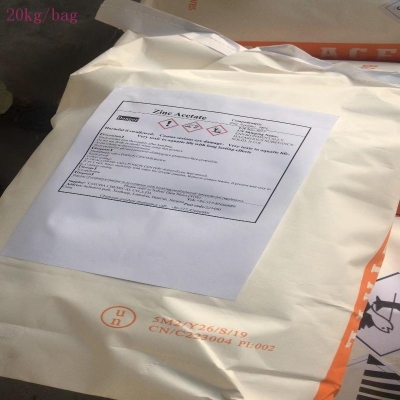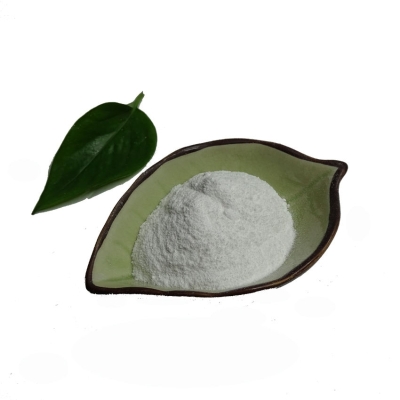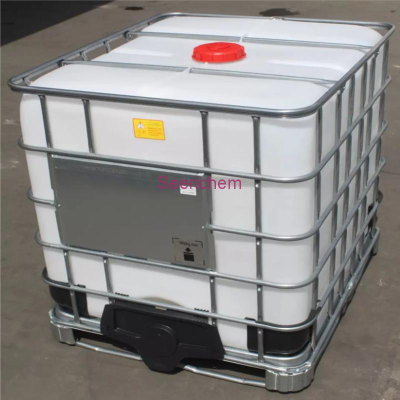-
Categories
-
Pharmaceutical Intermediates
-
Active Pharmaceutical Ingredients
-
Food Additives
- Industrial Coatings
- Agrochemicals
- Dyes and Pigments
- Surfactant
- Flavors and Fragrances
- Chemical Reagents
- Catalyst and Auxiliary
- Natural Products
- Inorganic Chemistry
-
Organic Chemistry
-
Biochemical Engineering
- Analytical Chemistry
-
Cosmetic Ingredient
- Water Treatment Chemical
-
Pharmaceutical Intermediates
Promotion
ECHEMI Mall
Wholesale
Weekly Price
Exhibition
News
-
Trade Service
With the arrival of mid-March, the fertilizer market has begun to ease, but companies are still relatively conservative and purchase fertilizers according to demand.
This year's distributors seem to have no confidence in the spring ploughing market.
Facing the urea market, it is a step-by-step situation.
.
The supply side maintains stability and rises.
It is believed that most market participants will be disappointed with the urea supply side this year.
The direct reason is that the relatively stable start-up situation of the factory makes the market lack of opportunities for speculation.
Moreover, the air index during the “two sessions” nationwide this year was good.
Except for the restricted parking of some enterprises in Shanxi and Hebei, the intensity of environmental inspection and control was obviously not as good as in previous years.
At the same time, due to the government's advance of the off-season reserve of natural gas, the traditional gas shortage cycle has been shortened, prompting gas-head urea companies to resume production.
In short, compared with the same period last year, the current market clearly lacks environmental inspections and natural gas shortages, which are good factors for urea price increases, and this is directly reflected in the high reports and low prices of some factories and the refusal of downstream circulation links to catch up.
High school.
The overall demand is shrinking.
Domestic spring fertilizers continue to be used.
There are few news of tight prices in the urea market in various places, and more are the fast-in and fast-out operations in the circulation of agricultural materials.
From provincial agricultural supplies to first- and second-tier wholesalers, most of the urea at this time is handled in an attitude of small profits but quick turnover and maintaining market share.
The topics they talked about were mostly empty words such as "Take Pan Xia".
Investigating the reasons, it is not difficult to see the industry's expectations of shrinking overall market demand.
Previously, the editor mentioned the enthusiasm of farmers to grow grain and the topic of reducing the cost of growing grain.
Now it has become another resistance to the market.
Frankly speaking, since the second half of last year, the price of urea has remained high, and the reason why large companies gave up off-sale reserves is also because the price increase space is difficult to be proportional to the risk.
Naturally, terminal farmers will inevitably weigh the trend of grain prices and the high price of urea.
I remember that as early as before the Spring Festival, some people mentioned the decline in agricultural demand, but most of the people were ignoring the mentality of being right.
Also, the compound fertilizer market, which is also affected by the cost of growing grains, is not ideal.
The price increase in spring is under pressure, and the production is high in the later period.
The purchase of raw materials for nitrogen fertilizer may also be considered; the demand for industrial plywood and power plants is relatively stable, but the support for high-priced urea is limited.
The international market continues to find the bottom of the international urea market.
Although the recent price decline trend has slowed down, the lack of buyers is worrying.
Fortunately, India said that it might launch a new round of urea bidding in April, but the current international mainstream FOB price of US$230/ton of small granular urea in bulk indicates a new low for bidding.
However, the offshore quotation of China's small granular urea, which is already out of touch with the international market, rose to 280~285 US dollars/ton instead of falling.
In view of the "hot inside and cold outside" urea market, the industry determined that it would not be eligible for the later "marking".
At the same time, even guessing the possibility of imported urea.
In early March, the low-end FOB prices of small granular urea in the Baltic Sea and Yuzhny were reported to US$220/ton and US$225/ton respectively.
It can be seen that the international market with excess supply and demand is waiting for the price to bottom out.
At present, the urea market is in a peak demand season.
Affected by the risks of supply trends, companies and distributors are relatively pessimistic.
In some areas, top-dressing of wheat continues to provide certain support for the price of urea, and driven by the market, it is expected that the ex-factory price will rise slightly, but there is still a risk of falling prices in the long term.
This year's distributors seem to have no confidence in the spring ploughing market.
Facing the urea market, it is a step-by-step situation.
.
The supply side maintains stability and rises.
It is believed that most market participants will be disappointed with the urea supply side this year.
The direct reason is that the relatively stable start-up situation of the factory makes the market lack of opportunities for speculation.
Moreover, the air index during the “two sessions” nationwide this year was good.
Except for the restricted parking of some enterprises in Shanxi and Hebei, the intensity of environmental inspection and control was obviously not as good as in previous years.
At the same time, due to the government's advance of the off-season reserve of natural gas, the traditional gas shortage cycle has been shortened, prompting gas-head urea companies to resume production.
In short, compared with the same period last year, the current market clearly lacks environmental inspections and natural gas shortages, which are good factors for urea price increases, and this is directly reflected in the high reports and low prices of some factories and the refusal of downstream circulation links to catch up.
High school.
The overall demand is shrinking.
Domestic spring fertilizers continue to be used.
There are few news of tight prices in the urea market in various places, and more are the fast-in and fast-out operations in the circulation of agricultural materials.
From provincial agricultural supplies to first- and second-tier wholesalers, most of the urea at this time is handled in an attitude of small profits but quick turnover and maintaining market share.
The topics they talked about were mostly empty words such as "Take Pan Xia".
Investigating the reasons, it is not difficult to see the industry's expectations of shrinking overall market demand.
Previously, the editor mentioned the enthusiasm of farmers to grow grain and the topic of reducing the cost of growing grain.
Now it has become another resistance to the market.
Frankly speaking, since the second half of last year, the price of urea has remained high, and the reason why large companies gave up off-sale reserves is also because the price increase space is difficult to be proportional to the risk.
Naturally, terminal farmers will inevitably weigh the trend of grain prices and the high price of urea.
I remember that as early as before the Spring Festival, some people mentioned the decline in agricultural demand, but most of the people were ignoring the mentality of being right.
Also, the compound fertilizer market, which is also affected by the cost of growing grains, is not ideal.
The price increase in spring is under pressure, and the production is high in the later period.
The purchase of raw materials for nitrogen fertilizer may also be considered; the demand for industrial plywood and power plants is relatively stable, but the support for high-priced urea is limited.
The international market continues to find the bottom of the international urea market.
Although the recent price decline trend has slowed down, the lack of buyers is worrying.
Fortunately, India said that it might launch a new round of urea bidding in April, but the current international mainstream FOB price of US$230/ton of small granular urea in bulk indicates a new low for bidding.
However, the offshore quotation of China's small granular urea, which is already out of touch with the international market, rose to 280~285 US dollars/ton instead of falling.
In view of the "hot inside and cold outside" urea market, the industry determined that it would not be eligible for the later "marking".
At the same time, even guessing the possibility of imported urea.
In early March, the low-end FOB prices of small granular urea in the Baltic Sea and Yuzhny were reported to US$220/ton and US$225/ton respectively.
It can be seen that the international market with excess supply and demand is waiting for the price to bottom out.
At present, the urea market is in a peak demand season.
Affected by the risks of supply trends, companies and distributors are relatively pessimistic.
In some areas, top-dressing of wheat continues to provide certain support for the price of urea, and driven by the market, it is expected that the ex-factory price will rise slightly, but there is still a risk of falling prices in the long term.







